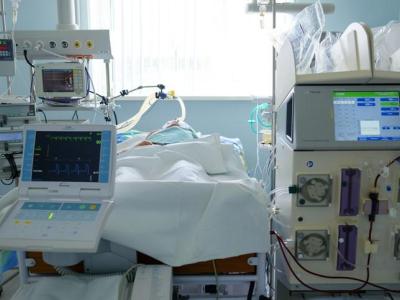CARB-X supports bacteriophage therapy for recurrent urinary infections
CARB-X announced today that it is awarding up to $2.05 million to Locus Biosciences of Morrisville, North Carolina, to develop a CRISPR-Cas3-enhaced bacteriophage for treating recurring urinary tract infections caused by Klebsiella pneumoniae.
The money from CARB-X (the Combating Antibiotic Resistant Bacteria Biopharmaceutical Accelerator) will help fund the development of LBP-KP01, a cocktail of bacteriophages that specifically target K pneumoniae bacteria and are engineered with a CRISPR-Cas3 construct that targets the K pneumoniae genome. The company says the dual phage-CRISPR mechanism makes LBP-KP01 more effective at killing K pneumoniae cells, even in strains that are antibiotic resistant, than corresponding bacteriophages.
"This approach has the potential to kill with laser-sharp precision the bacteria causing an infection without causing damage to other cells," CARB-X research and development director Erin Duffy, PhD, said in a press release. "If successful, this could transform the treatment of these serious life-threatening infections and save lives."
Locus will be eligible for an additional $10.5 million from CARB-X if certain project milestones are met.
Since its launch in 2016, CARB-X has awarded $257 million to fund early development of 72 new treatments or diagnostics for drug-resistant infections.
Nov 10 CARB-X press release
NICU study finds high rate of nonsusceptibility in E coli infections
A study of infants in neonatal intensive care units (NICUs) with Escherichia coli infections found a substantial rate of nonsusceptibility to commonly administered antibiotics, researchers reported yesterday in JAMA Pediatrics.
In the study, a team led by researchers at Children's Hospital of Philadelphia assessed patterns of antibiotic susceptibility in E coli among infants admitted to NICUs at 69 hospitals. E coli is a leading cause of serious infections among infants in NICUs, including early- and late-onset sepsis, and reports of resistance to commonly used antibiotics have been emerging in recent years. But there neonatal-specific antibiotic susceptibility data for E coli in the United States are scarce.
Using data from the Premier Health Database, the researchers identified infants admitted to US NICUs from 2009 through 2017, then assessed microbiologic data on E coli isolated from infant blood, urine, and cerebrospinal fluid. The primary outcome was changes in annual antibiotic susceptibility over the study period. A total of 721 infants with at least one episode of E coli infection and available antibiotic susceptibility results were analyzed.
Nearly all isolates were tested against ampicillin (720) and gentamicin (718), the two antibiotics most commonly administered to newborns as empiric therapy. No significant changes were observed over time in the overall annual proportions of antibiotic nonsusceptibility to ampicillin, with a mean of 66.8% of isolates showing nonsusceptibility and an estimated yearly change of −0.28% (95% confidence interval [CI], −1.75% to 1.18%).
The proportion of isolates nonsusceptible to aminoglycosides (gentamicin) was 16.8%, with an estimated yearly change of −0.85% (95% CI, −1.93% to 0.23%), and 5% of isolates were nonsusceptible to the extended-spectrum beta-lactamase phenotype, with an estimated yearly change of 0.46% (95% CI, −0.18% to 1.11%). No isolates with nonsusceptibility to carbapenems were identified.
Among 218 infants with early-onset infection, 22 (10.1%) had isolates with nonsusceptibility to both ampicillin and gentamicin.
"Our findings emphasize the importance of ongoing surveillance of neonatal antibiotic susceptibility patterns to inform empirical antibiotic therapies for newborn infants," the authors of the study wrote.
Nov 9 JAMA Pediatr abstract
Focus groups identify major themes shaping antibiotic perceptions
A series of focus groups held with adult patients and parents across the United States identified four major themes in attitudes toward antibiotic use and risks, researchers reported yesterday in Open Forum Infectious Diseases.
To better understand how adult patients and parents view antibiotic risks, and how they incorporate those risks into their antibiotic use decision-making, researchers from the Centers for Disease Control and Prevention (CDC) and Emory University School of Medicine conducted 12 focus groups in states with the highest antibiotic prescribing rates in March 2017. Topics included perceptions of antibiotics, expectations for antibiotics, reaction to not receiving antibiotics when desired, knowledge and perception of antibiotic risks, and response to antibiotic message testing. Fifteen parents and 16 adult patients participated.
The first major theme identified was that participants understood that antibiotics weren't necessary for all infections, such as those caused by viruses, but were confused about when they were needed, and that emotion often influenced their desire for antibiotics. In addition, they believed that antibiotics were needed if symptoms were severe or prolonged, regardless of their clinical syndrome. Second, participants had a limited understanding of antibiotic risks. Antibiotic resistance was seen as the primary risk, but understanding of resistance varied, and it was viewed as a distant harm, while immediate adverse events, like side effects, were seen as uncommon.
The third theme identified was that participants, when weighing the risks and benefits of antibiotics, prioritized the potential benefits and instant gratification, often overestimating the benefits. The fourth theme was a willingness to defer to clinicians' decisions about antibiotics, especially if the clinician is a good communicator who provides guidance and suggestions for alternative treatments.
The authors say the information gleaned from the focus groups has been used to inform the CDC's Be Antibiotics Aware educational campaign.
"Previous public health messaging has emphasized antibiotic resistance as the main risk of antibiotic overuse; however, our findings show that this message is unlikely to reduce patient demand for antibiotics," the authors wrote. "Instead, health messaging should focus on educating patients about both the frequency and potential severity of antibiotic adverse events."
Nov 9 Open Forum Infect Dis abstract












